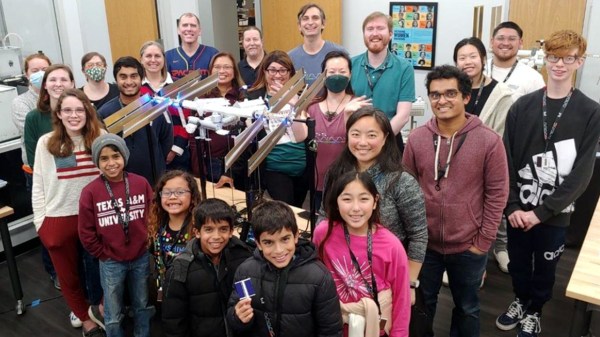Do humanoid robots dream of electric retirement? Who knows, but maybe we can ask Boston Dynamics’ Atlas HD, which was officially retired this week. The humanoid robot, notable for its warehouse Parkour and sweet dance moves, never went into production, at least not as far as we know. Atlas always seemed like it was intended to be an R&D platform, to see what was possible for a humanoid robot, and in that way it had a heck of a career. But it’s probably a good thing that fleets of Atlas robots aren’t wandering around shop floors or serving drinks, especially given the number of hydraulic blowouts the robot suffered. That also seems to be one of the lessons Boston Dynamics learned, since Atlas’ younger, nimbler replacement is said to be all-electric. From the thumbnail, the new kid already seems pretty scarred and battered, so here’s hoping we get to see some all-electric robot fails soon.
iss67 Articles
On An Aging Space Station, Air Leaks Become Routine
Anyone who’s ever owned an older car will know the feeling: the nagging worry at the back of your mind that today might be the day that something important actually stops working. Oh, it’s not the little problems that bother you: the rips in the seats, the buzz out of the rear speakers, and that slow oil leak that might have annoyed you at first, but eventually just blend into the background. So long as the car starts and can get you from point A to B, you can accept the sub-optimal performance that inevitably comes with age. Someday the day will come when you can no longer ignore the mounting issues and you’ll have to get a new vehicle, but today isn’t that day.
Looking at developments over the last few years one could argue that the International Space Station, while quite a bit more advanced and costly than the old beater parked in your driveway, is entering a similar phase of its lifecycle. The first modules of the sprawling orbital complex were launched all the way back in 1998, and had a design lifetime of just 15 years. But with no major failures and the Station’s overall condition remaining stable, both NASA and Russia’s Roscosmos space agency have agreed to several mission extensions. The current agreement will see crews living and working aboard the Station until 2030, but as recently as January, NASA and Roscosmos officials were quoted as saying a further extension isn’t out of the question.
Still, there’s no debating that the ISS isn’t in the same shape it was when construction was formally completed in 2011. A perfect case in point: the fact that the rate of air leaking out of the Russian side of the complex has recently doubled is being treated as little more than a minor annoyance, as mission planners know what the problem is and how to minimize the impact is has on Station operations.
Continue reading “On An Aging Space Station, Air Leaks Become Routine”
Hackaday Links: November 12, 2023
Somebody must really have it in for Cruise, because the bad press just keeps piling up for the robo-taxi company. We’ve highlighted many of the company’s woes in this space, from unscheduled rendezvous with various vehicles to random acts of vandalism and stupid AI pranks. The hits kept coming as California regulators pulled the plug on testing, which finally convinced parent company General Motors to put a halt to the whole Cruise testing program nationwide. You’d think that would be enough, but no — now we learn that Cruise cars had a problem recognizing children, to the point that there was concern that one of their autonomous cars could clobber a kid under the right conditions. The fact that they apparently knew this and kept sending cars out for IRL testing is a pretty bad look, to say the least. Sadly but predictably, Cruise has announced layoffs, starting with the employees who supported the now-mothballed robo-taxi fleet, including those who had the unenviable job of cleaning the cars after, err, being enjoyed by customers. It seems a bit wrongheaded to sack people who had no hand in engineering the cars, but then again, there seems to be a lot of wrongheadedness to go around.
ISS Mimic Brings Space Station Down To Earth
Built at a cost of more than $150 billion over the last twenty-five years, the International Space Station is arguably one of humanity’s greatest engineering triumphs. Unfortunately, unlike Earthly construction feats such as the Hoover Dam, Burj Khalifa, or the Millau Viaduct, you can’t visit it in person to really appreciate its scale and complexity. Well, not unless you’ve got the $50 million or so to spare to buy a seat on a Dragon capsule.
Which is why the team behind the ISS Mimic project are trying to make the ISS a bit more relatable. The open source project consists of a 3D printable 1:100 model of the Station, which is linked to the telemetry coming down from the real thing. A dozen motors in the model rotate the solar arrays and radiators to match the positions of their full-scale counterparts, while LEDs light up to indicate the status of various onboard systems.
To learn more about the ISS Mimic, team members Bryan Murphy, Sam Treadgold, and Tristan Moody stopped by this week’s Hack Chat to bring us up to speed on the past, present, and future of this fascinating project.
Continue reading “ISS Mimic Brings Space Station Down To Earth”
Listening To The ISS On The Cheap
Like any hobby, amateur radio has no upper bounds on what you can spend getting geared up. Shacks worth tens of thousands of dollars are easy to come by, and we’ll venture a guess that there are hams out there pushing six figures with their investment in equipment. But hands down, the most expensive amateur radio station ever has to be the one aboard the International Space Station.
So what do you need to talk to a $100 billion space station? As it turns out, about $60 worth of stuff will do, as [saveitforparts] shows us in the video below. The cross-band repeater on the ISS transmits in the 70-cm ham band, meaning all that’s needed to listen in on the proceedings is a simple “handy talkie” transceiver like the $25-ish Baofeng shown. Tuning it to the 437.800-MHz downlink frequency with even a simple whip antenna should get you some reception when the ISS passes over.
In our experience, the stock Baofeng antenna isn’t up to the job, so something better like the Nagoya shown in the video is needed. Better still is a three-element Yagi tuned down slightly with the help of a NanoVNA; coupled with data on when the ISS will be within line-of-sight, picking up the near-constant stream of retransmissions from the station as Earth-based hams work it should be a snap — even though [saveitforparts] only listened to the downlink frequency here, for just a bit more of an investment it’s also possible for licensed hams to uplink to the ISS on 145.900 MHz.
For those who want a slightly higher level of difficulty, [saveitforparts] also has some tips on automating tracking with an old motorized mount for CCTV cameras. Pitchfork notwithstanding, it’s not the best antenna tracker, but it has promise, and we’re eager to see how it pans out — sorry. But in general, the barrier to entry for getting into space communications is so low that you could easily make this a weekend project. We’ve been discussing this and other projects on the new #ham-shack channel over on the Hackaday Discord. You should pop over there and check it out — we’d be happy to see you there.
Launching Paper Planes From Way, Waaaaaay Up
Every now and again we stumble across something a bit unexpected, and today that’s the fact that there have been quite a few efforts at launching paper planes from as close to space as possible. The current record for the highest paper plane launch is a whopping altitude of 35,043 meters.
 That altitude is considerably short of what would be called “space”, but it’s still an awfully long way up and the air there is very thin compared to on the surface. Space is generally (but not universally) considered to be beyond 100 km above sea level, a human-chosen boundary known as the Kármán line. 35 km is a long ways into the stratosphere, but still within Earth’s atmosphere.
That altitude is considerably short of what would be called “space”, but it’s still an awfully long way up and the air there is very thin compared to on the surface. Space is generally (but not universally) considered to be beyond 100 km above sea level, a human-chosen boundary known as the Kármán line. 35 km is a long ways into the stratosphere, but still within Earth’s atmosphere.
Even so, that doesn’t mean there haven’t been efforts to go considerably higher. There was a Japanese proposal to drop airplanes made from special heat-resistant paper from the International Space Station, roughly 400 km above Earth. Success would show that low-speed, low-friction atmospheric reentry is feasible — for pieces of paper, anyway. But one of the challenges is the fact that there is no practical way to track such objects on their way down, and therefore no way to determine where or when they would eventually land.
There have been many other high-altitude paper plane launches, but the current record of 35,043 meters was accomplished by David Green in the United Kingdom as part of a school project. Such altitudes are in the realm of things like weather balloons, and therefore certainly within the reach of hobbyists.
As for the airplanes themselves, the basic design pictured here probably won’t cut it, so why not brush up on designs with the Paper Airplane Design Database? Even if you don’t send them into the stratosphere (or higher), you might find something worth putting through a DIY wind tunnel to see how they perform.
The International Space Station Is Always Up There
Thanks to its high orbital inclination, the International Space Station (ISS) eventually passes over most inhabited parts of the Earth. Like other artificial satellites, though, it’s typically only visible overhead during passes at sunrise and sunset. If you’d like to have an idea of where it is beyond the times that it’s directly visible, take a look at this tabletop ISS tracking system created by [dpelgrift].
![]() The tracker uses an Adafruit Feather inside its enclosure along with a Featherwing ESP32 WiFi co-processor. Together they direct a 3D printed rocket-shaped pointing device up and down by way of a SG90 micro-servo, while a 28BYJ-48 stepper motor provides rotation.
The tracker uses an Adafruit Feather inside its enclosure along with a Featherwing ESP32 WiFi co-processor. Together they direct a 3D printed rocket-shaped pointing device up and down by way of a SG90 micro-servo, while a 28BYJ-48 stepper motor provides rotation.
This setup allows it to take in all of the information required to calculate the Station’s current position. The device uses the current latitude and longitude, as well as its compass heading, and combines that with data pulled off the net to calculate which direction it should be pointing.
While it might seem like a novelty or programming challenge, this project could be useful for plenty of people who just want to keep track so they know when to run outside and see the Station pass by, or even by those who use the radio repeater aboard the ISS. The repeater on the ISS and plenty of other satellites are available to amateur radio operators for long-distance VHF and UHF communication like we’ve seen in projects like these.
















